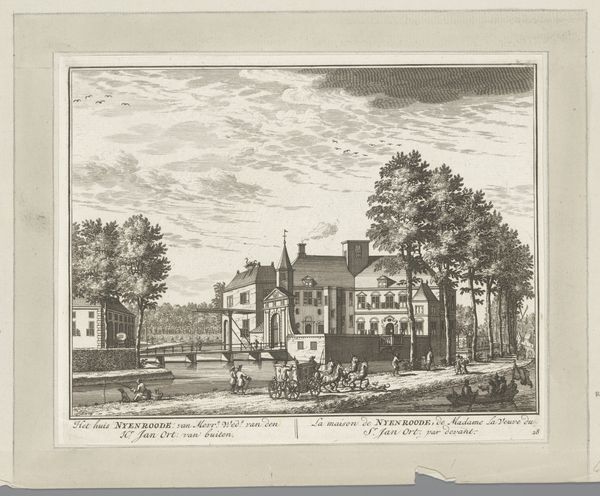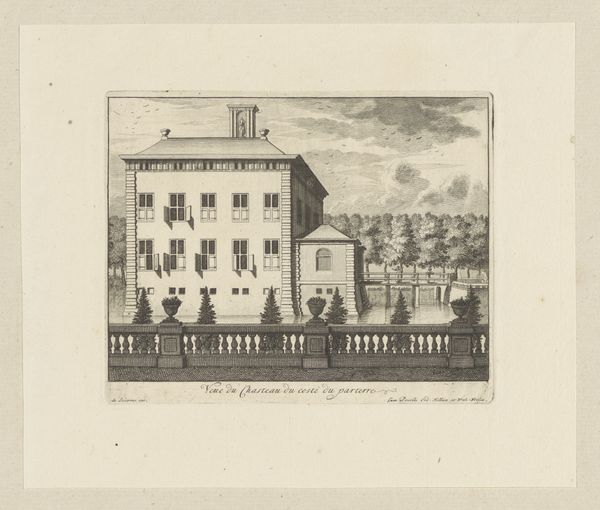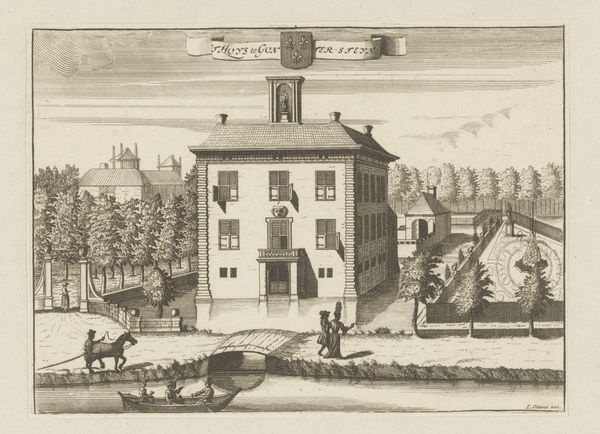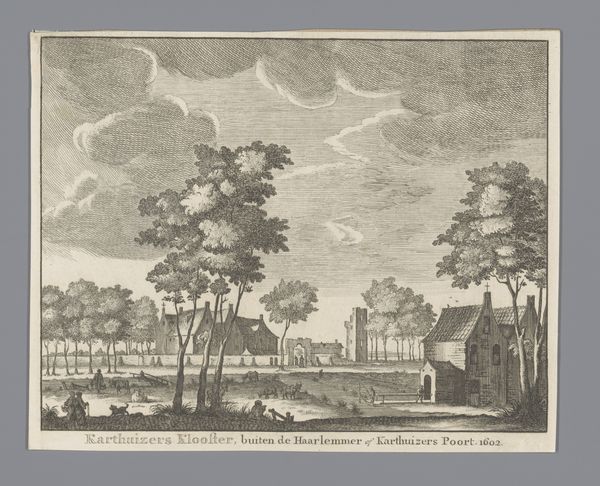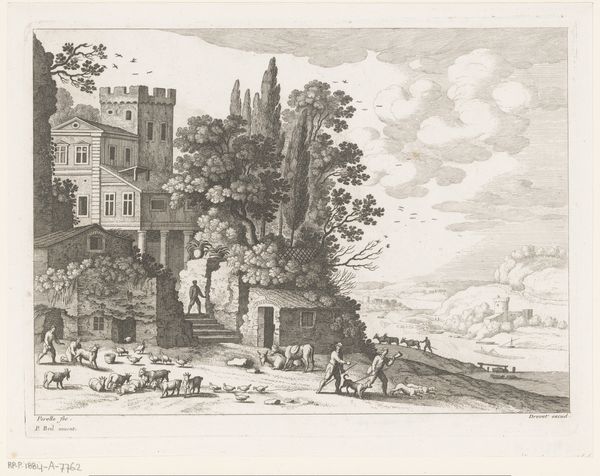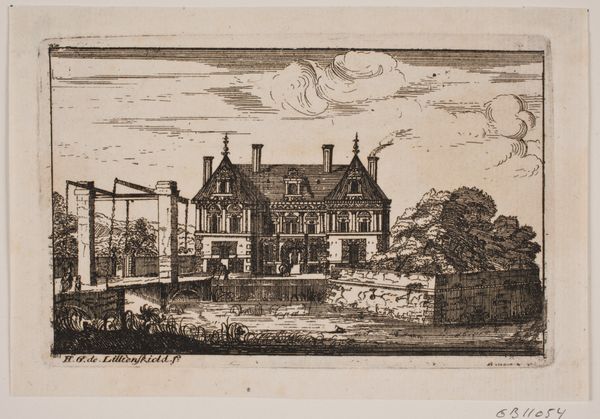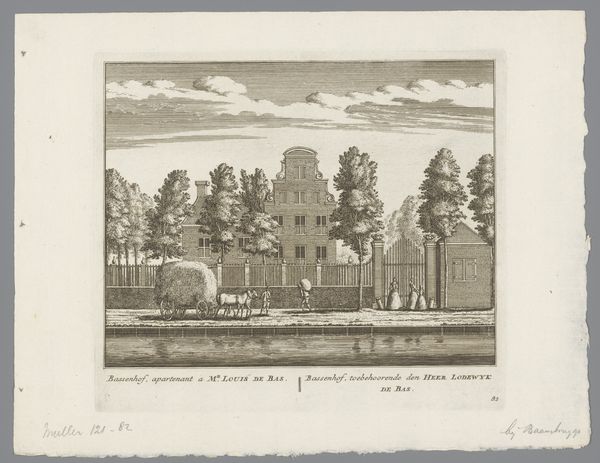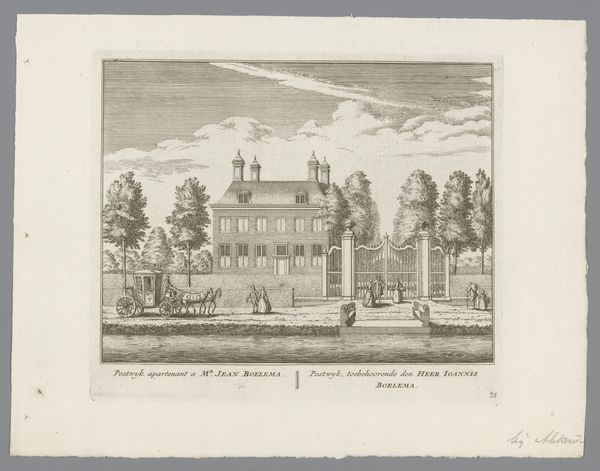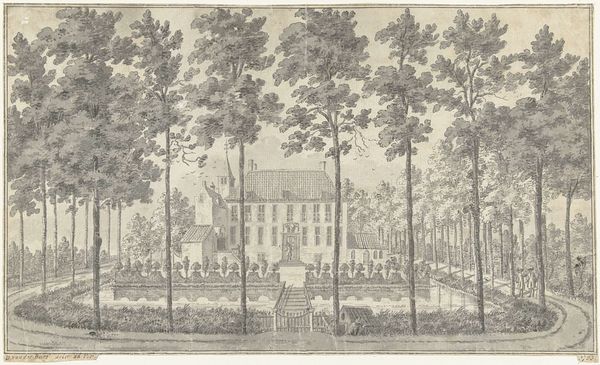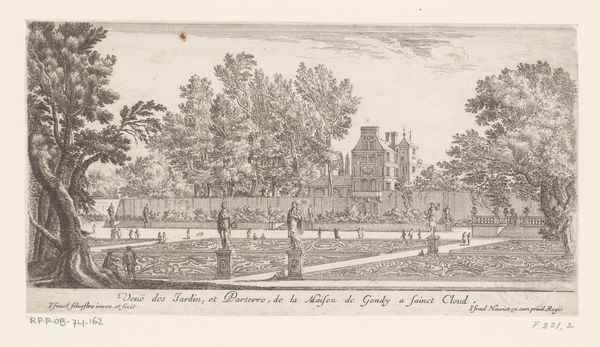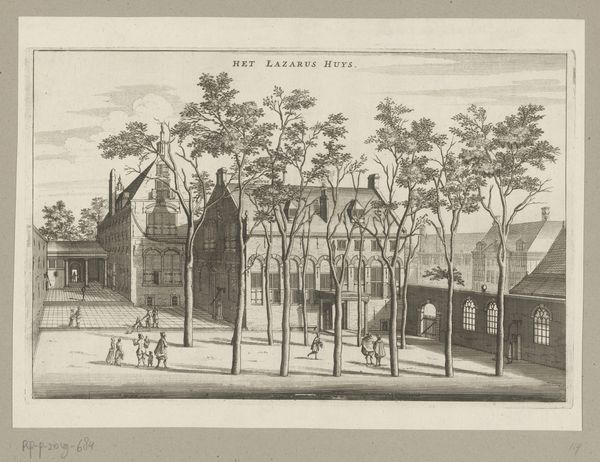
print, engraving
#
baroque
# print
#
old engraving style
#
landscape
#
geometric
#
cityscape
#
engraving
Dimensions: height 150 mm, width 202 mm
Copyright: Rijks Museum: Open Domain
Curator: Here we have “Gezicht op kasteel De Haar in Haarzuilens,” a print crafted after 1710. Its creator is Jan van Vianen, and it currently resides here at the Rijksmuseum. Editor: The scene gives me a somewhat melancholic impression. The muted tones, combined with the rather formal composition of trees bordering the castle, evokes a feeling of removed grandeur, a spectacle at a distance. Curator: Indeed. It’s a beautiful example of Baroque landscape aesthetics. What I find interesting is how these kinds of images functioned almost as real estate documentation, highlighting the status and architectural significance of noble estates, serving both a decorative and promotional purpose. Editor: Promotional, definitely, yet there's also a strange dissonance. You've got this imposing castle meant to represent power and privilege, almost hiding. The trees nearly obscure the view. Is it asserting dominance or attempting a kind of assimilation with the landscape? Who were they trying to reach with these works? Curator: Likely the upper classes who collected such prints, keen to appreciate or perhaps emulate such displays of status. The detail in the engraving also allows us a glimpse into the socio-political landscape; notice the geometric gardens, a physical manifestation of control over nature. Editor: I do notice the tiny figures in the foreground – are they meant to represent a connection to everyday life, or simply emphasize the castle's scale? They seem almost incidental to this grandiose statement. A question I would want to investigate is that in this statement that presents privilege, do people from lower strata ever had a saying, an opinion on this art, this show of power and control? Curator: That is the relevant question. While we may not have the answers of those particular people from that historical time, the image’s longevity grants it continued impact and allows a sustained interrogation of societal hierarchies and what symbols those with wealth project onto it. Editor: Right, it is a layered complexity of the ways we regard displays of opulence across the ages. Food for thought.
Comments
No comments
Be the first to comment and join the conversation on the ultimate creative platform.

